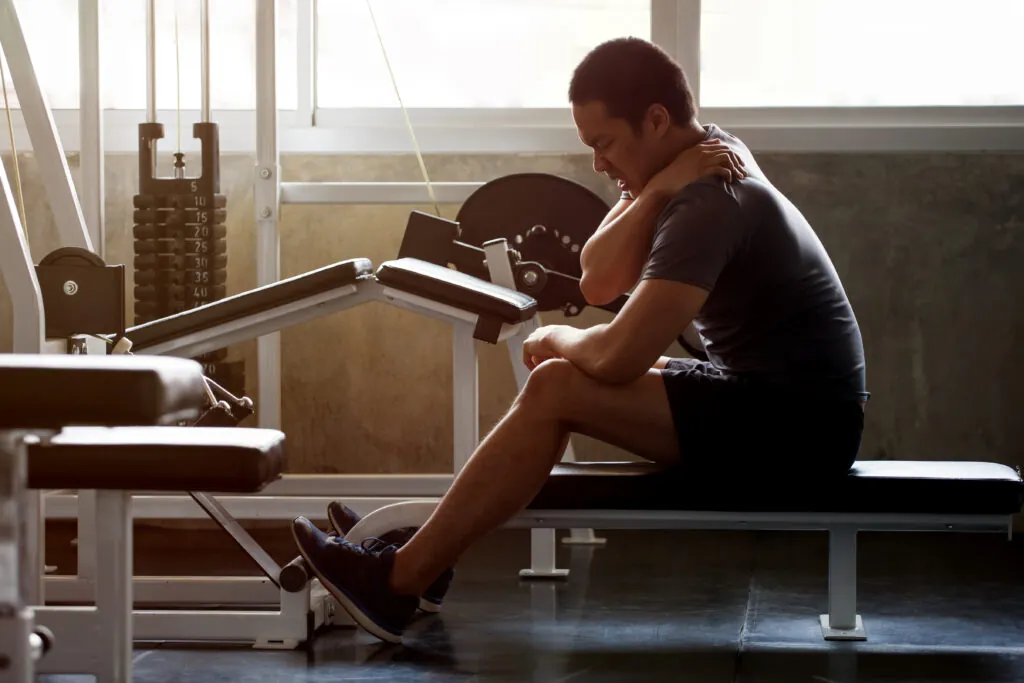The shoulder is one of the most mobile joints in the human body, allowing us to perform a wide range of tasks — from pitching a softball and swinging a golf club to reaching to put objects in tall cabinets. This great range of motion, however, comes with challenges. Joints that can move in various directions are less stable than others. The shoulder is particularly complex, supported by four joints, over 10 muscles, and numerous major ligaments and tendons. Shoulder pain is common, affecting between 18 and 26% of adults. Continue reading to learn more about shoulder pain symptoms, causes, and treatments.
Shoulder Pain Symptoms
Your shoulder is a ball-and-socket joint, giving you a great range of motion but lacking stability. Because the shoulder joint gets dislocated more than any other joint, you should be aware of any pain you experience. Failing to treat a shoulder injury early can lead to worsening conditions. You should schedule an appointment with a physical therapist if you notice any of the following symptoms:
- Your shoulder looks deformed.
- You can’t use your shoulder without pain.
- You have shoulder weakness.
- Your shoulder is swollen.
- Your arm or hand is numb.
Causes of Shoulder Pain

Most shoulder pain stems from overuse, but it can also result from force or trauma, such as falls. Some specific causes of shoulder pain include:
- Arthritis
- Dislocation
- Shoulder separation
- Frozen shoulder
- Nerve injury
- Rotator cuff tendinopathy
- Bicep tendinopathy
- Labral tear
Additionally, pain may originate in other parts of the body, known as referred pain. For example, neck pain can lead to shoulder pain due to interconnected nerves and muscles.
Treatments for Shoulder Pain
Shoulder pain can be acute or chronic, resulting from injury or gradual wear and tear. Regardless of the cause, addressing shoulder pain early can improve recovery time. Physical therapy exercises can be initiated right after injury or surgery, incorporating simple movements for early recovery. Even if you’ve been experiencing shoulder pain for months or years without physical therapy, it’s important to make an appointment. Physical therapists (PTs) can help improve your shoulder’s mobility, pain levels, and functionality.

How a Physical Therapist Can Help Relieve Your Shoulder Pain
Physical therapists are trained in the structure and function of every muscle, bone, ligament, and tendon in the shoulder. This expertise enables them to evaluate the source of your shoulder pain and treat both the joint and surrounding muscles effectively, preventing future issues. PTs will use:
- Exercises to restore movement capacity
- Education on appropriate recovery techniques and movements to avoid.
- Stretches to promote flexibility.
- Manual therapy to mobilize the muscles and joints

No two individuals with shoulder pain will receive identical treatment, as the causes and types of pain vary greatly. Your PT will design a home exercise program to apply the techniques learned in the clinic. They will adjust your plan to your functional level—some patients may begin with simple range-of-motion exercises, while others may start with strength-building exercises to return to sports.
Your physical therapist can be the first provider you see for shoulder pain. They will refer you to another provider if they cannot help improve your symptoms. You will be in good hands trusting your physical therapist with nagging injuries. However, you should always visit an emergency care provider if you need immediate care to prevent more severe problems in your health.
Physical Therapy Near You
Given the frequent use of shoulders in various daily activities, paying attention to any unusual sensations in the joint is crucial. Whether you’re experiencing chronic shoulder pain or occasional discomfort, seeking treatment from a qualified physical therapist is essential for adequate recovery, and regular sessions with a physical therapist can significantly improve your mobility, reduce pain, and enhance your overall quality of life. Take the first step towards recovery by finding a physical therapy location near you. Early intervention can lead to quicker and more effective relief, allowing you to return to normal activities and get back to what you love.


